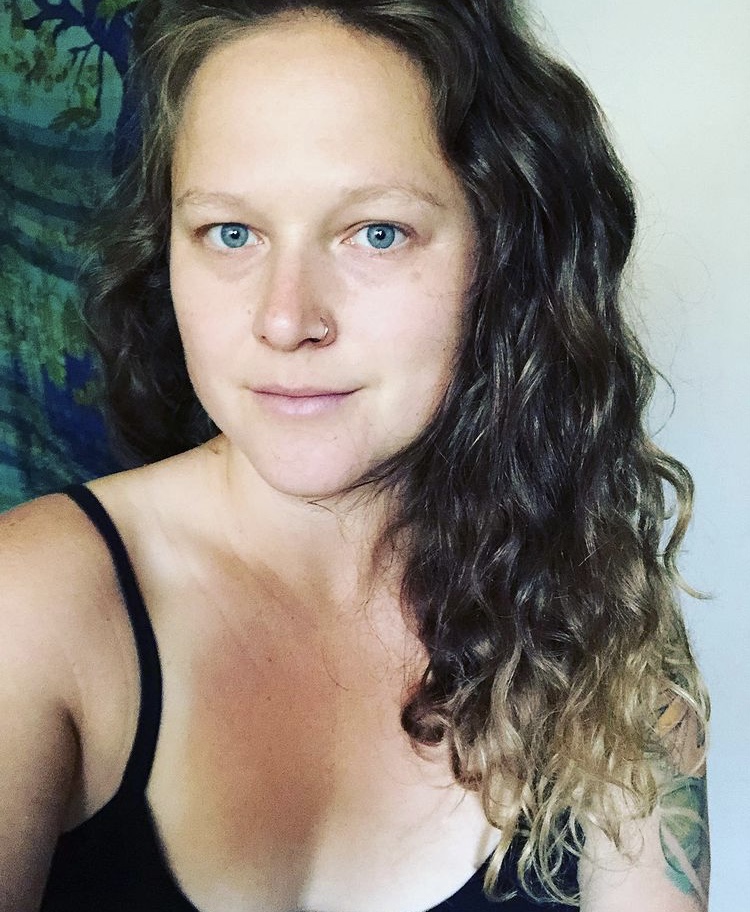
The following article is an excerpt from Anna Palmer’s book, Coming Home: Healing From an Eating Disorder by Finding Beauty in Imperfection. May the words here grant you deeper permission to come home to the fullness of yourself, humanness, divinity, and all. Welcome home.
~
Preface. My Background: What Is an Eating Disorder? The Bio-psychosocial Model
The bio-psychosocial model is a tool I have used to understand the psychology of others, as well as my own psychology from an Eating Disorder development lens:
This model, developed by George L. Engel in 1977 is “an interdisciplinary model that examines the interconnection between biology, psychology, and socio-environmental factors.” It was the first of its kind to explore a multidimensional and multifaceted approach to health and dis-ease.
The bio-psychosocial model of health, wellbeing and dis-ease, is based on three tenets: the first being biology (genetics, physiology, and physical health); the second being psychology (self-esteem, mental health, and coping skills); and the third being social (peers, family relationships, and circumstances).
We are complex human beings. We are made up of physical atoms, nervous systems, and limbic systems. We are thinking minds and feeling bodies. More externally, who and what we relate to builds our unique temperament, psychology, and ecosystem.
Therapeutically speaking, strictly cognitive-based models of trauma do not address the underlying somatic responses of the nervous system and thus, fail to address the whole picture. This being: the body, nervous system, and the body-mind connection. Cognitive therapy can oftentimes lead the client in circles.
Of course, sharing our stories, being seen, feeling heard and being witnessed in our story telling and emotional pain is a necessary part of healing. However, somatic-trauma-informed models, which address the body, are often looked over. We wonder why we can’t “get over” it by just analyzing and cognitively understanding our experience, staying stuck in cycles of addiction, depression, anxiety, or self-harm.
Ancient sage wisdom and yogis have taught that the body stores our energy and emotions. Emotions are “energy in motion.” You feel this when you “get the chills,” doing a yoga class and finding yourself in tears in the middle of a hip-opener pose, or perhaps getting a massage or acupuncture and feeling emotions surface “out of nowhere.”
The body is the subconscious mind, whereas, the mind is the conscious mind. We need both, and we need both to act in coherence with the other. When they do not, dis-ease (mental or physical) can come in to alert us.
The survival mechanisms enlisted during overwhelming or traumatic experiences enable just that: our survival. But, the energy, emotional debris, or charge of that event must “go” somewhere.
One can begin to see how an Eating Disorder or addiction may ensue following traumatic event(s) (a “too much, too soon” experience).
An Eating Disorder (and their surrounding behaviors) is one way of coping with the residual emotions and effects of traumatic events. They are complex dis-eases which root deeply into compromised self-esteem, self-image, and early parental relationships that perhaps didn’t model healthy emotional expression and self-regulation.
From my experience, Eating Disorders attach to a deep childlike part of the psyche, a part that so deeply felt shamed, rejected, unloved, abandoned, not enough, too much, “wrong,” or “bad.” These shadow parts of ourselves, the parts we were told weren’t okay, become submerged into the subconscious mind (i.e. the body), housed in shame and guilt.
When we made a mistake as a child, acted “out,” were overly emotional or reactive, and then shamed, judged and criticized for these less-than-acceptable behaviors, these parts of our normal expression got cut off in shame and judgment, severed from our own psyche.
Eating Disorders, among the various manifestations of addictions, are “simply” (not so simply addressed) a need trying to be met. A need for belonging, love, validation, approval, acceptance, attention, comfort, and overall sense of “okayness” to feel however we feel.
The problem with a lot of modern Eating Disorder treatment approaches is that they simply try to “fix” the behavior. Stop the dieting, stop the binging, stop the over-exercising. And, fix the not eating, or overeating patterns. And, maybe, on some level they touch on the thoughts and the feelings.
This behavior approach truly doesn’t work long-term, as it can only address surface layer aspects of the ED. I have witnessed this in myself and friends who have also been through this quickly failing approach.
In my first bout of an ED at the age of 12 (Anorexia Nervosa), I was too shut down to receiving emotional therapy. The only thing that “fixed” my ED behaviors then, was seeing a nutritionist. The nutritionist gave me a meal plan, that I, a typical type A person, could follow. I had tangible goals to reach, something to work toward. And, I was able to “achieve” quasi-recovery, based on getting my numbers (i.e. weight and calories) back up.
In the modern treatment world, you could say I had recovered. That I was a success. But the fact that my ED resurfaced at the age of 16 says otherwise.
I had not healed the deeply rooted beliefs: the shame, the deep insecurity and low self-worth and self-image that was at the root of my ED, and also for a lot of women, men, and non-binary folks. All of which stem from some earlier formative experience.
Eating Disorders change a person from the inside out and the outside in. Food and the body become a means to “control” one’s emotional experience. Whether this is through starvation, restriction of foods and food groups, exercise to manipulate the body or escape tough emotions, binging to self-soothe or numb, all these behaviors, in my humble opinion, are interchangeable.
It didn’t matter whether I was starving my body, restricting my food, binging and purging, or over-exercising. Trying to disconnect, escape, control, micro-manage, obsess, or find an outlet for all the things I didn’t want to feel or address, remained the same intended goal.
I couldn’t bear to feel the fear, anxiety, panic, rejection, abandonment, guilt, anger or sadness without ED behaviors. I thought my feelings would kill me. It was trauma and early formative experiences on repeat.
The food and exercise become the “safe” vehicle of the emotional experience.
EDs can easily become an identity. It was overwhelming to think of my life without an ED. How would I cope? Who would I be? How would I find safety in myself, my world, and my relationships?
It is a false safety and identity, though, one bent on lies, to self and other, and precarious, changeable factors (body size, shape, weight).
It’s like placing all of your coins inside a spinning teacup, dangling on a wire, hanging upside down from the ceiling. Impossible basically. And destined to break, to crash and come crumbling down.
One minute, stepping onto the scale seeing the desired number followed by elation and joy. The next minute, the number dial goes up, followed by anger, self-hatred, and self-destructive behaviors.
An ED is simply not sustainable. It cuts you off at all ends. Your relationships suffer, your health suffers, your life and vitality suffer. Maybe not at first. At first, you may feel amazing, receiving compliments and praise from our equally “sick,” diet-entrenched, fat-phobic culture.
You may feel in control, on top of the world, like nothing can ever touch or hurt you again, because if the rest of your life is going to sh*t, at least this one thing isn’t. Until it does. Until you step on the scale, and that number reads higher. Until, your starving brain reaches out for food to binge on in a moment of desperation.
Your world around you continues to shrink, though, rather than expand. I know how safe that can feel, trust me. You feel safe in this cocoon, like numbers, calories, and weight can make your world feel so contained and manageable.
Having spent the majority of my life actively shrinking and berating my body, my emotions, presence, voice, and even my own existence and right to take up space, I was so damn afraid of the expansion. Expanding my waist, my weight, my food choices and thus, my life and my experiences. Expansion means you feel it all, the “good,” the “bad,” the ugly and all the life in between. You are exposed to the potential for feeling pain and loss. And, also, joy again.
If pain or loss were the expected outcome (from past experience, trauma, etc.), of course this would terrify anyone. So, the ED becomes the irreplaceable flotation device, the buoy always ready to hold you. But it holds you at an arms-length distance away, always promising love and approval, but never fully giving it to you. This is the bait on a line you never seem to catch.
So, after so many years of “failed” attempts of long-lasting recovery, you start to get either more (1) hopeless or more (2) desperate. I did both. I was so hopeless and so desperate to be freed from this relentless prison that I was becoming more willing to do and try anything.
~
Tune in next week for the next excerpt in this series.
~
Read part one of this series: Coming Home: On Healing from an Eating Disorder.
~







Read 2 comments and reply